Navigating the Complex World of Autism in Teens
Autism Spectrum Disorder (ASD) presents a diverse array of signs and symptoms that become more apparent during adolescence. As social, academic, and emotional demands increase, many teens with autism display characteristic behaviors and challenges. Recognizing these signs early can lead to timely diagnosis and intervention, which are crucial for supporting their development and well-being.
Communicative and Social Interaction Challenges in Teens
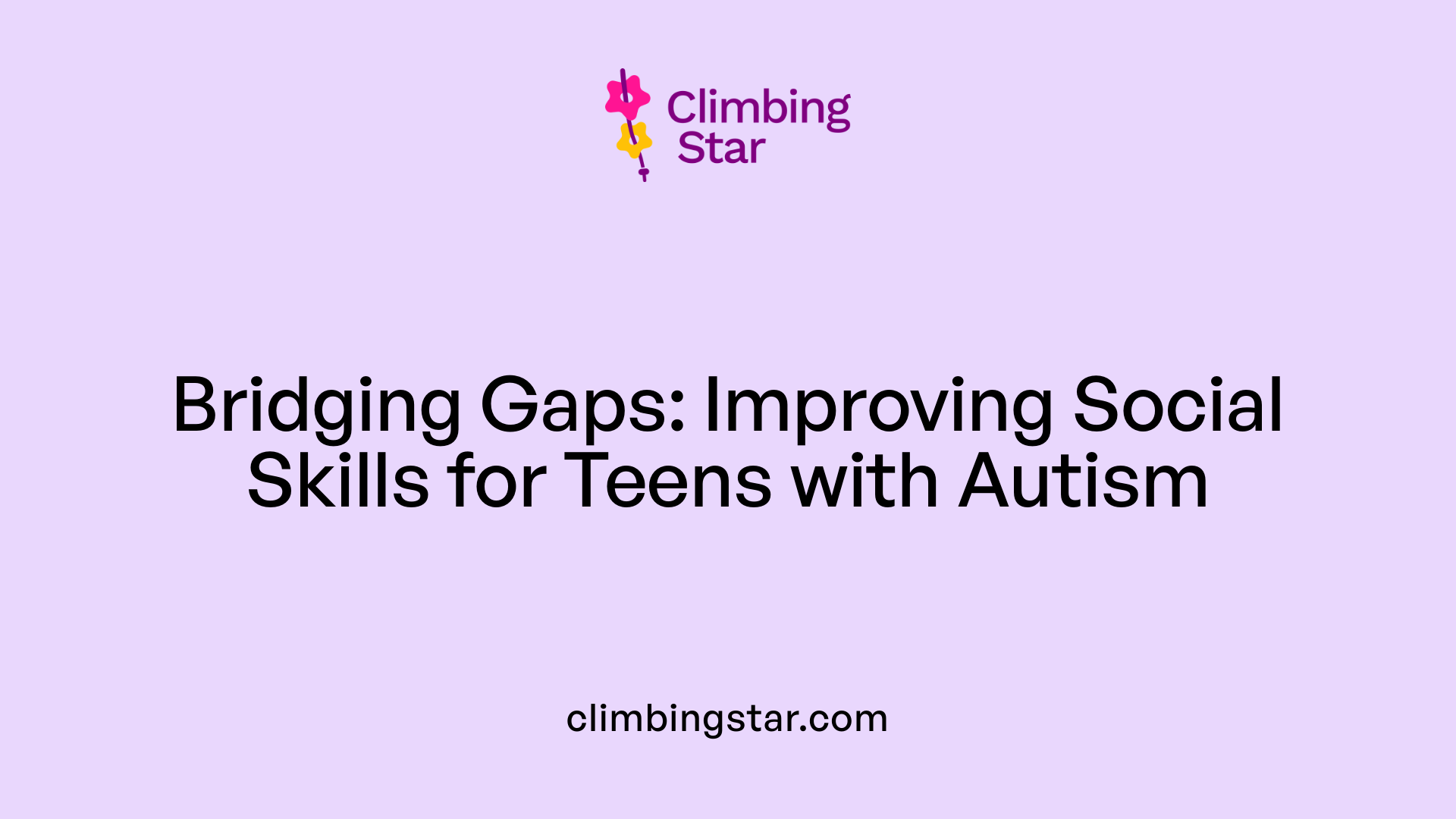
How can awareness and understanding of autism characteristics in adolescents be improved?
Raising awareness and improving understanding of autism in teenagers require a comprehensive approach. Educational initiatives, such as campaigns led by organizations like the National Autistic Society, play a vital role in spreading information about autism traits in adolescence.
Targeted programs like the Autism Continuum and Autism Treatment (ACAT) aim to boost self-awareness among autistic teens, helping them recognize their behaviors and reducing societal stigma.
Incorporating social skills training, structured learning environments, and peer mentoring, such as initiatives like SDARI, helps adolescents understand and manage their social and communicative traits. These programs encourage spontaneous conversations, understanding unspoken social cues, and developing empathy.
Access to authentic, peer-created resources, especially through online platforms, allows teens to explore their identity openly. These resources provide relatable insights and coping strategies.
Engaging families, school staff, and friends creates a supportive network that fosters acceptance and tailored intervention. Such an environment encourages teens to develop their social skills within a framework of understanding and encouragement.
By combining these educational and supportive strategies, society can help teens with autism navigate social interactions more confidently and with greater acceptance.
Behavioral Patterns and Routine Preferences
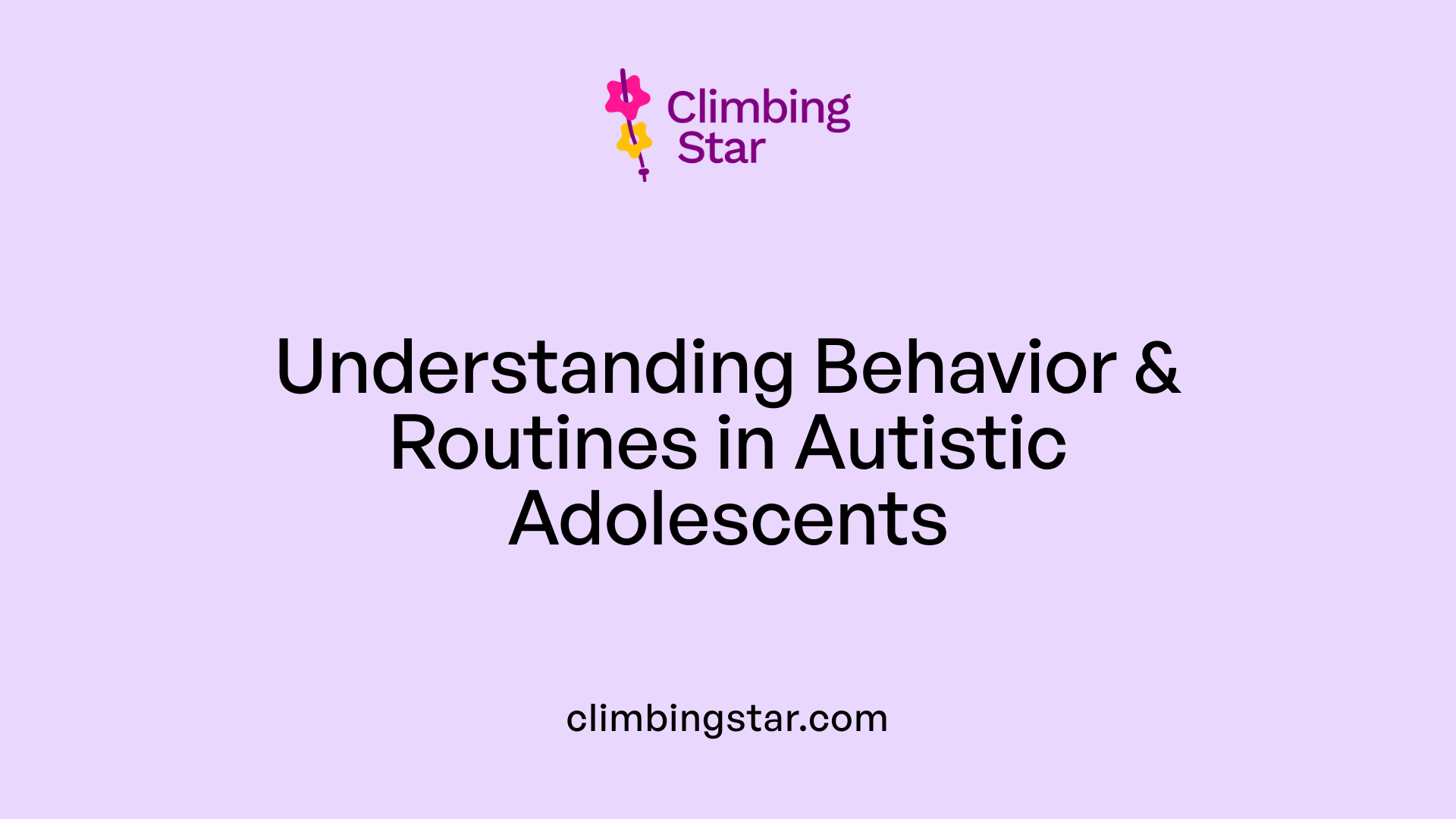 Autistic individuals often display distinctive behavioral patterns and preferences for routines that may become more noticeable during adolescence. Repetitive behaviors, such as hand-flapping, rocking, or lining up objects, are common. These actions serve as a way to self-soothe or manage sensory sensitivities.
Autistic individuals often display distinctive behavioral patterns and preferences for routines that may become more noticeable during adolescence. Repetitive behaviors, such as hand-flapping, rocking, or lining up objects, are common. These actions serve as a way to self-soothe or manage sensory sensitivities.
A strong preference for routines is typical among autistic teens, and disruptions to their established daily schedule can cause significant distress. They may become overwhelmed or upset if routines are suddenly changed, highlighting their need for predictability.
Many teenagers with autism have intense interests or passions, often focusing heavily on specific topics or objects. This preoccupation can be viewed as a way to engage deeply with their interests, which might overshadow other activities.
Repetitive speech, such as echolalia—repeating words or phrases—may also be observed. This behavior can serve communicative or self-regulatory functions.
Attachment to particular objects is common, with some teens showing a strong preference for certain items, which offer comfort or familiarity.
What are early developmental signs of autism in teenagers?
Early signs of autism in teenagers may include challenges with both verbal and nonverbal communication. For instance, they might speak in a monotone, take language literally, or have difficulty interpreting facial expressions and body language. Social difficulties are evident as they often struggle to form friendships, preferring to isolate themselves or have trouble understanding unspoken social rules.
Behaviorally, they may exhibit repetitive actions and show intense focus on specific interests or hobbies, such as lining up toys or fixating on certain topics. These tendencies are accompanied by a need for routines; changes can lead to anxiety or upset.
Sensory sensitivities, like being bothered by loud noises, textures, or smells, are also prominent. They might seek sensory input through behaviors such as hand-flapping or pressing into textures that comfort them.
Furthermore, co-occurring issues such as anxiety, sleep disturbances, or difficulties with executive functioning—like organizing and planning—often become more evident during adolescence as social and academic pressures increase.
Sensory Sensitivities and Processing Differences
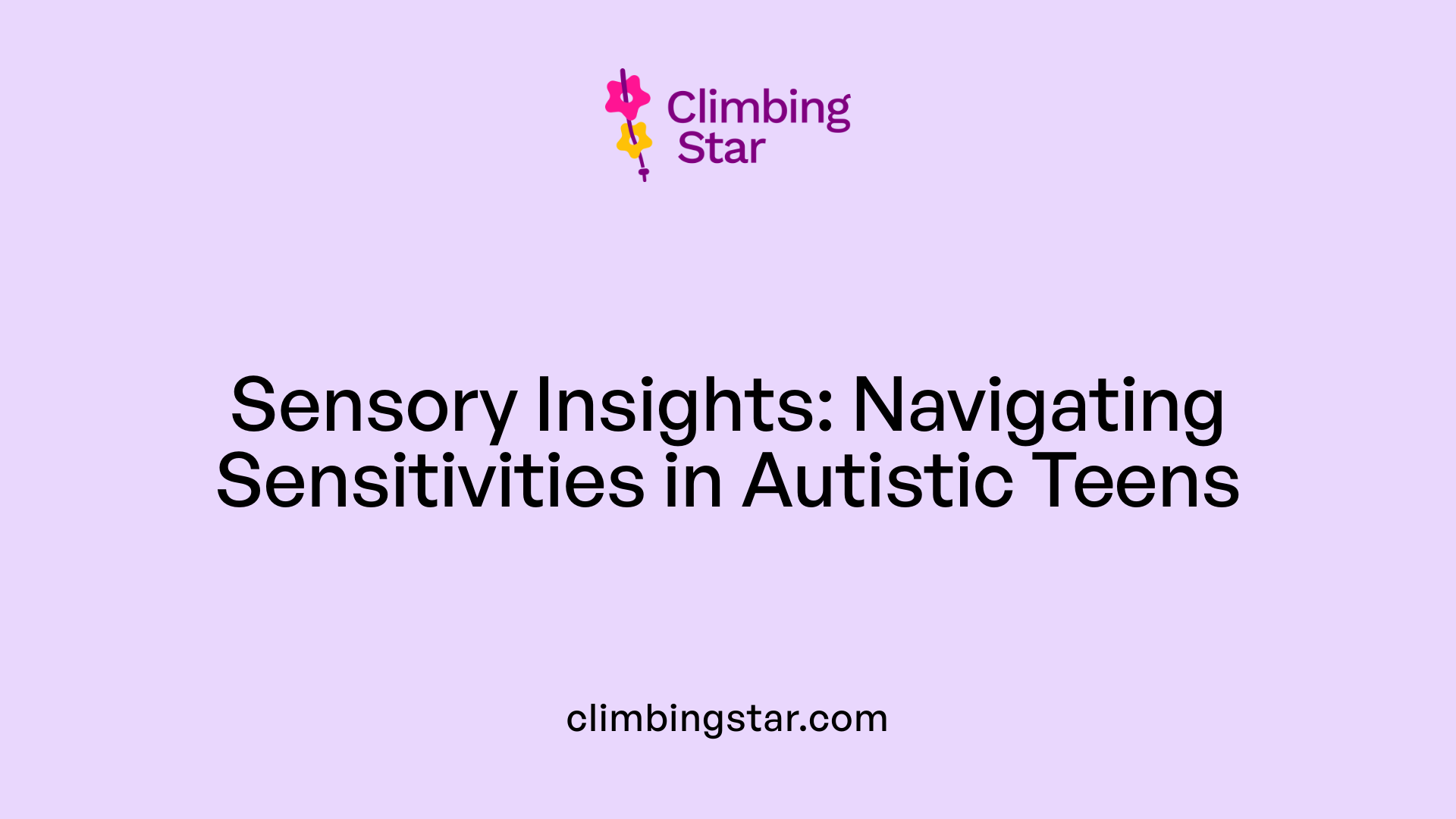 Autistic teens often experience a range of sensory sensitivities that can significantly impact their daily lives. These sensitivities include over- and under-responsiveness to sights, sounds, textures, and smells. For example, a loud noise or bright light can cause discomfort or distress, leading to withdrawal or meltdowns.
Autistic teens often experience a range of sensory sensitivities that can significantly impact their daily lives. These sensitivities include over- and under-responsiveness to sights, sounds, textures, and smells. For example, a loud noise or bright light can cause discomfort or distress, leading to withdrawal or meltdowns.
Many teens avoid certain clothing textures or foods that they find irritating or overwhelming. For instance, they might refuse to wear tags on clothes or avoid eating foods with particular textures or strong odors.
Conversely, some may seek out sensory input or stimulation as a calming strategy. This might involve activities like spinning, hand-flapping, or rocking to self-soothe or achieve sensory comfort. Others might find certain textures or sounds especially soothing and seek them out repeatedly.
Unusual reactions to sensory stimuli are common, such as showing exaggerated responses to minor sensory inputs or seeming indifferent to intense stimuli that typically affect others. These sensory differences can contribute to behavioral challenges and may influence social interactions.
Understanding these sensory processing differences is vital for providing appropriate support and creating environments that accommodate sensory needs. Strategies such as sensory breaks, noise-canceling headphones, or tailored clothing choices can help reduce distress and improve daily functioning.
What clinical and diagnostic information is available regarding autism in teens?
Diagnosis of autism in teens involves a comprehensive assessment by a multidisciplinary team, including developmental history, behavioral observation, and standardized tools such as the ADOS and ADI-R. Clinical and diagnostic information focuses on identifying persistent deficits in social communication and interaction, along with restricted and repetitive behaviors, as outlined by DSM-5 criteria. The evaluation also considers co-occurring conditions like ADHD and anxiety, and explores strengths, daily functioning, and sensory processing. Assessment methods include interviews with parents, teachers, and the teens themselves, combined with observations across settings, and may involve questionnaires like the SCSQ or AQ. Since there is no single medical test for autism, diagnosis relies on professional judgment, validated assessment tools, and ongoing review, with considerations of developmental trajectory and individual differences.
More information on sensory processing differences in autistic teens
For a deeper understanding of how sensory processing differences manifest in autistic teens, searching for "Sensory processing differences in autistic teens" can provide useful resources and current research findings.
Identifying Signs Through Developmental Milestones
Autism spectrum disorder (ASD) can often be identified through specific developmental signs that appear as children grow. Recognizing these early indicators helps in prompt diagnosis and intervention.
In infancy, some early signs include avoiding eye contact, showing little interest in interactive games, and not responding to their name by about 9 months. Additionally, they may not use hand gestures like waving or pointing by around 12 months, and might not share interest in toys or activities as expected.
As children reach early childhood, not using gestures, delayed speech, or difficulty engaging in pretend play are common concerns. These children often struggle with social interactions, such as not noticing when others are upset or not joining in play with peers.
In toddlers and young children, developmental delays can become more evident with behaviors like lining up toys excessively, lack of response to social cues like facial expressions, and limited use of language.
In older children and teenagers, signs often include difficulty understanding social cues, such as body language and facial expressions. They may talk in a monotone voice, have restricted interests, and prefer routines with distress if routines are disrupted. Sensory sensitivities, like being bothered by loud noises or textures, frequently persist into these years.
Diagnosing autism involves looking at developmental progress and identifying patterns over time. Signs that are not typical of neurodevelopmental norms should prompt further evaluation.
| Age Group | Typical Developmental Behavior | Signs of Autism | Additional Notes |
|---|---|---|---|
| Infants (0-12 months) | Responding to name, engaging in interactive play | Not responding to name, less eye contact, no gestures like pointing or waving | Early clues often observed here |
| Toddlers (1-3 years) | Imitating adults, playing with toys, talking | Not using gestures, delayed speech, limited pretend play | Greater focus on routine and objects |
| Preschool age (3-5 years) | Sharing interests, engaging in social games | Not sharing interests, difficulty understanding social cues | May have repetitive behaviors and sensory sensitivities |
| School age (6+ years) | Forming friendships, participating in group activities | Difficulty with conversations, intense interests, inflexibility | Ongoing sensory sensitivities and routines |
Recognizing these signs at each stage can lead to earlier interventions, which significantly support development and quality of life for individuals with autism.
For more details, search using the query: "Early signs of autism in teenagers developmental milestones." Early identification allows for targeted therapies, including speech, occupational, behavioral, and social skills training, tailored to each child's needs.
Variations in Symptoms Across Age and Gender
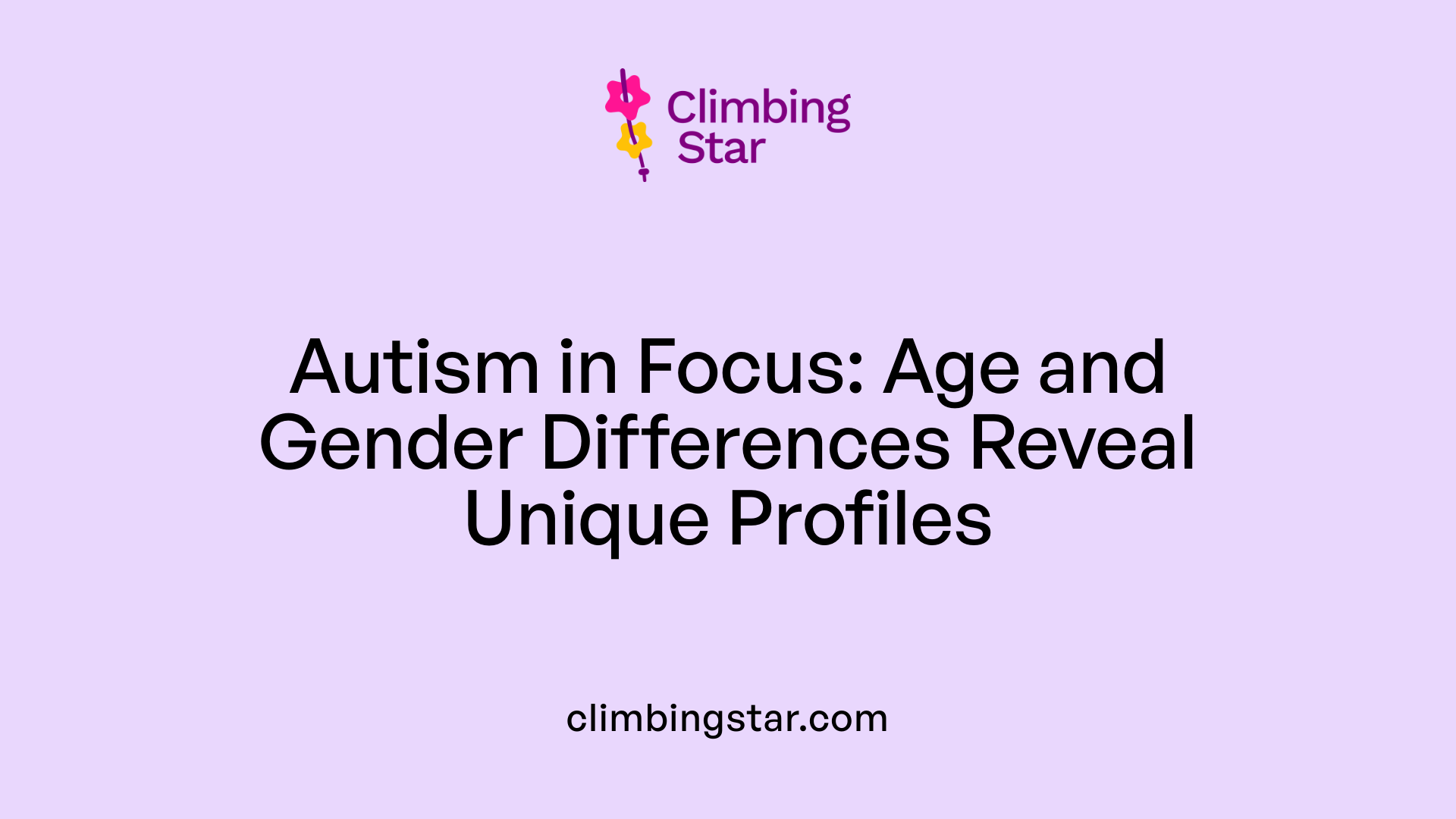
How do autism symptoms vary across different ages and genders?
Autism spectrum disorder presents differently depending on age and gender, influencing how symptoms are observed and diagnosed.
In infancy, signs are often subtle, including limited eye contact, not responding to their name by 9 months, and minimal engagement in interactive play. As children grow into early childhood, core features such as repetitive behaviors, intense interests, sensory sensitivities, and social communication challenges become more evident.
However, girls with autism frequently camouflage their symptoms. They may imitate peers’ behaviors, withdraw in social settings, or focus on socially acceptable interests, which can mask their difficulties. This camouflaging contributes to underdiagnosis or delayed diagnosis in females.
In adolescence, differences become more pronounced. Males tend to display more overt behaviors like repetitive movements and intense interests openly, although these can decrease with age. Females often continue to mask symptoms, leading to less obvious signs such as subtle social difficulties, anxiety, or depression.
Throughout adulthood, challenges persist, especially relating to social relationships and sensory sensitivities. Women, in particular, may develop sophisticated masking strategies, hiding their struggles. This ability to conceal symptoms can delay recognition and support needs.
Research suggests that girls with autism show fewer stereotypical behaviors and are more adept at camouflaging, which complicates diagnosis. Conversely, boys often exhibit more overt repetitive behaviors and social difficulties. These differences underscore the importance of age- and gender-sensitive assessment approaches.
| Age Group | Typical Signs in Males | Typical Signs in Females | Snippets of Camouflaging Strategies |
|---|---|---|---|
| Infants | Limited eye contact, delayed language | Similar, but less obvious | Imitating social cues, mimicking speech patterns |
| Children | Repetitive behaviors, rigid routines | Fewer overt behaviors, social imitation | Hiding struggles, pretending to understand social cues |
| Adolescents | Focus on specific interests, social withdrawal | Internalized issues like anxiety, masking behaviors | Social imitation, suppressing unusual interests |
| Adults | Sensory sensitivities, social difficulties | Maintaining routines, social masking | Developing complex strategies to appear typical |
Understanding these variations helps in crafting better diagnostic tools and support systems, ensuring that autism is recognized regardless of age or gender.
The Importance of Early Detection and Support Strategies
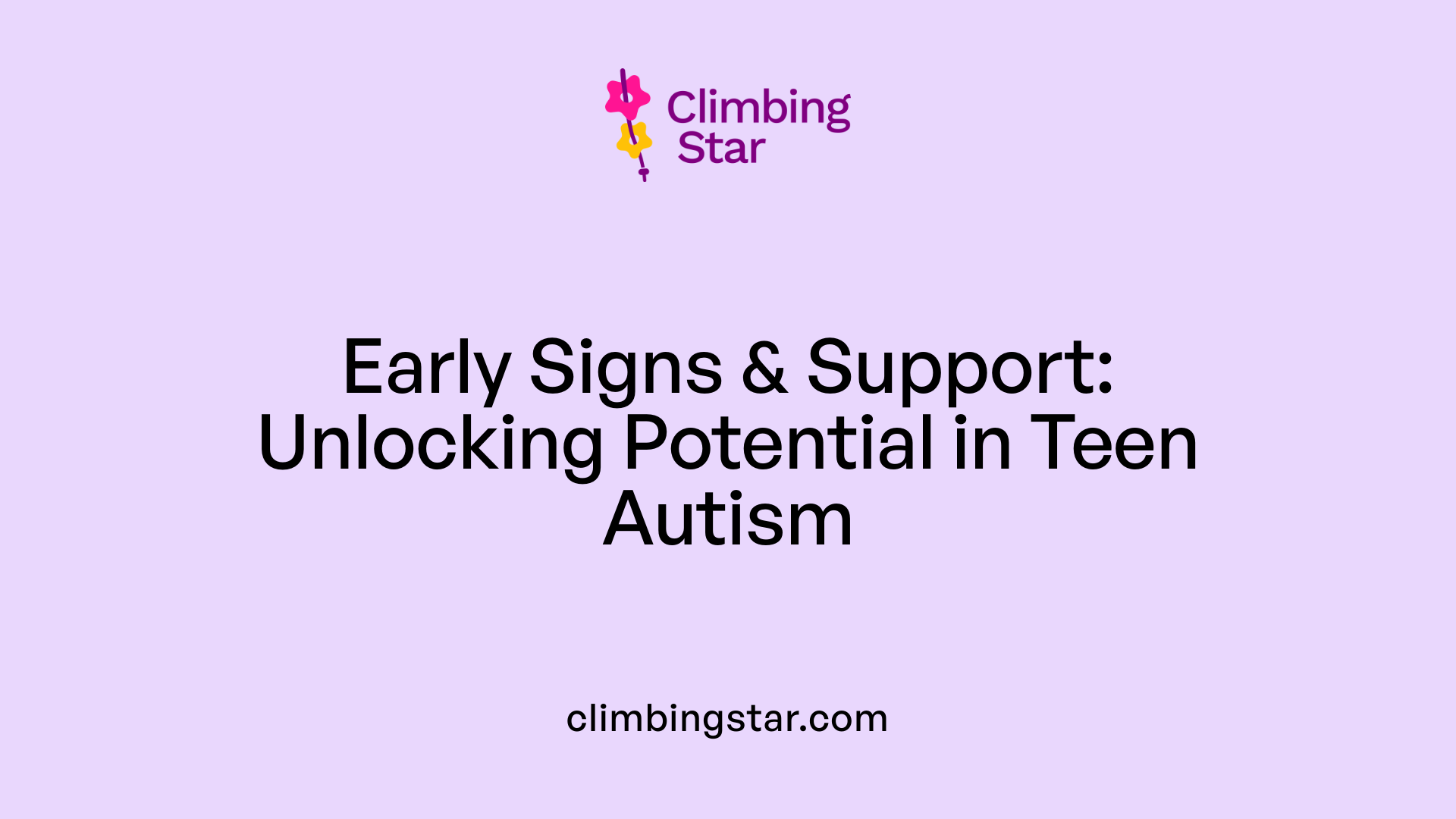
What are the common signs and symptoms of autism in teenagers?
Teenagers with autism often display several distinctive characteristics related to social, communication, behavioral, and sensory domains. They may struggle to make or maintain friendships due to difficulties understanding and interpreting social cues such as body language, facial expressions, and eye contact. Communication differences are common, including literal understanding of speech, unusual tone or volume, and challenges with reciprocal conversations.
Repetitive behaviors and intense interests often become more noticeable in adolescence. These might include fixating on specific topics, engaging in repetitive movements, or adhering strictly to routines. Sensory sensitivities—like being upset by loud noises, bright lights, or certain textures—are also frequent.
Emotionally, autistic teens may face challenges like heightened anxiety, depression, or frustration when routines are disrupted. These issues can affect their daily functioning and social integration.
Early recognition of these signs is vital. It enables timely diagnosis and tailored support, which can significantly improve developmental trajectories. A clinical assessment by specialists typically confirms autism and guides intervention planning.
Understanding these signs helps caregivers, educators, and clinicians create effective strategies to aid autistic adolescents in navigating school, social environments, and community life. Early support can foster skills that promote independence and well-being.
| Sign/Behavior | Description | Typical Age Onset | Possible Interventions |
|---|---|---|---|
| Social interaction difficulties | Trouble making friends, poor eye contact | Early childhood and adolescence | Social skills training, therapy |
| Communication differences | Literal language, unusual speech patterns | Early signs around age 2-3 | Speech therapy, communication aids |
| Repetitive behaviors | Hand-flapping, lining up objects | First years of life | Behavioral therapy, routine management |
| Sensory sensitivities | Distress to noise, textures, lights | Infancy to childhood | Sensory integration therapy |
| Emotional challenges | Anxiety, depression | Adolescence | Counseling, coping strategy training |
Recognizing these symptoms early—especially during transitions like starting school—can lead to more effective interventions and improved lifelong outcomes for autistic individuals.
Promoting Awareness and Effective Support
Understanding the signs and symptoms of autism in teens is essential for early diagnosis, which can profoundly impact their developmental trajectory. Increased awareness among parents, educators, and peers fosters a more accepting environment where individuals with autism can thrive. Tailored educational strategies, timely therapeutic interventions, and community support are vital components of ensuring that autistic adolescents receive the understanding and assistance they need to reach their full potential.
References
- Later signs of autism: pre-teens and teenagers
- Understanding Autism in Kids and Teens
- Autism spectrum disorder - Symptoms and causes
- Signs and Symptoms of Autism Spectrum Disorder
- Autism Spectrum Disorder - For Teens
- Signs of autism in children
- Signs that a child or adult may be autistic
- Autism First Signs in Children and Teenagers
- Autism Spectrum Disorder (ASD) Symptoms & Causes







